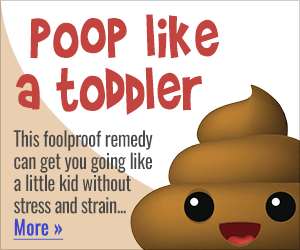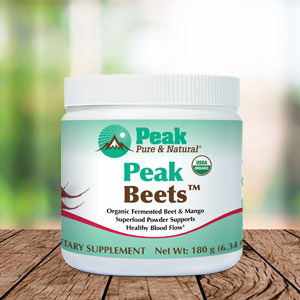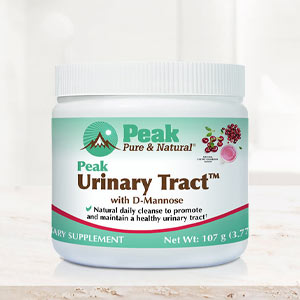Get Easy Health Digest™ in your inbox and don’t miss a thing when you subscribe today. Plus, get the free bonus report, Mother Nature’s Tips, Tricks and Remedies for Cholesterol, Blood Pressure & Blood Sugar as my way of saying welcome to the community!
The ‘male’ hormone turning women’s sex drives back on

Compared to a man’s sex drive, the female sex drive has largely been ignored.
Men have options, and not just those little blue pills…
Testosterone therapy is often recommended to correct low levels of the hormone when a man begins to experience low sex drive, fewer spontaneous erections and difficulty sustaining erections.
Boosting testosterone in men can also alleviate fatigue, difficulty concentrating (brain fog), sleep trouble, depression, declining muscle and bone mass and yes, hot flashes.
Sounds an awful lot like menopause, doesn’t it?
Shockingly, testosterone can alleviate all these same symptoms in women — but it’s a safe bet your gynecologist has never talked to you about it.
So why is testosterone therapy not being used to help women get their sex drives — and more — back?
His or her hormone?
Testosterone is known as a male hormone. But that’s a misnomer, in the same way that estrogen is considered a female hormone.
Both of these sex hormones influence functions in both sexes, but testosterone has a significant impact on sex drive.
Throughout a woman’s lifetime, the ovaries and adrenal glands produce testosterone. In fact, the female body produces three to four times as much testosterone as estrogen in our 20s and 30s.
So, where is all that testosterone going and what is it doing in a woman’s body?
Well, there’s a reason the brain is sometimes called the most important sex organ…
Both estrogen and testosterone have activating effects on brain circuits, influencing behaviors and emotions. Testosterone can trigger rapid effects, acting on membrane receptors or activating intracellular messenger cascades to testosterone receptors throughout the female body.
Working centrally from the brain, testosterone affects sexual arousal, vaginal lubrication and blood flow to motivate the pursuit of sexual pleasure.
But when a woman’s testosterone levels are too low (levels are half by age 60), she has fewer erotic thoughts, and that translates to much less motivation to pursue sex.
The significant drop in testosterone also impacts mechanisms in the body meant to stir up physical desire — like the production of nitric oxide (NO), a signaling molecule that relaxes the muscles around the clitoris and acts as a vasodilator.
It’s the same natural vasodilator you may have read helps give back the heart protection that menopause steals.
Studies suggest that female sexual arousal is primarily mediated by NO promoting greater blood flow to the area to achieve clitoral engorgement, which is mandatory for a woman’s sexual excitement.
Testosterone pros and cons
So, if testosterone replacement is an easy option for men to improve their sex drive, and is a very important hormone for a woman’s sexuality as well, why are women just now starting to hear about it?
Right now, there is no FDA-approved testosterone treatment for women. They say the studies are just not there on the long-term effects and appropriate dose amounts.
That means that even when doctors are willing to prescribe a standard dose, insurance may not cover it.
However, boutique med-spas and wellness centers are willing to provide testosterone creams, pills and even implantable pellets — at much higher doses — for women willing to take the gamble and pay more.
Is it worth it? I’ve read rave reviews from women who make it sound like a miracle drug. Some claim taking testosterone helped them:
- Achieve orgasm after years of not being able to.
- Regain intimacy with their partner.
- Feel energetic and like a younger version of themselves.
- Regain focus and enhanced cognition.
- Improve urinary incontinence symptoms.
There are some potential drawbacks, however, which makes having testosterone levels monitored very important…
Some women can experience hair loss, acne, facial hair and hair growth on the inner thigh. Rarer side effects include developing a deep voice, an enlarged clitoris and the possibility of distractingly high sexual arousal. Some women also report feeling more aggressive.
It can also raise blood pressure and cholesterol, so if you take medication for either, it’s a no-go.
What’s a girl to do
There are a lot of considerations when it comes to testosterone therapy for women. It’s always a good idea to discuss anything concerning sexual health with a trusted gynecologist.
If you decide to skip dosing testosterone or the very high amounts that seem to affect sex drive the most, you can still increase your levels of NO to support arousal.
NO is naturally produced in the body by eating certain vegetables. Beets, by far, can help raise NO production the most via the nitrate–nitrite–nitric oxide pathway.
Add in a few libido-boosting exercises, and you should be quite ready when the feeling hits you.
One more thing, make efforts to avoid estrogen dominance. Estrogen mimics are in our food, water and personal products. They create an imbalance where the amount of estrogen in the body can climb much higher than the amount of testosterone.
DIM, short for di-indole-methane, is a plant compound that works against estrogen mimics by binding to excess estrogen in your body and flushing it out. It won’t produce more testosterone, but balance can help with many symptoms after menopause.
Editor’s note: Did you know that when you take your body from acid to alkaline you can boost your energy, lose weight, soothe digestion, avoid illness and achieve wellness? Click here to discover The Alkaline Secret to Ultimate Vitality and revive your life today!
Sources:
‘I’m on Fire’: Testosterone Is Giving Women Back Their Sex Drive — and Then Some — New York Times Magazine
Testosterone Supplementation in Menopausal Women: Are There Side Effects? — Midi
Endothelial Nitric Oxide Synthase Regulation in Female Genital Tract Structures — Journal of Sexual Medicine
Testosterone positively regulates vagina NO-induced relaxation: an experimental study in rats — Journal of Endocrinological Investigation














